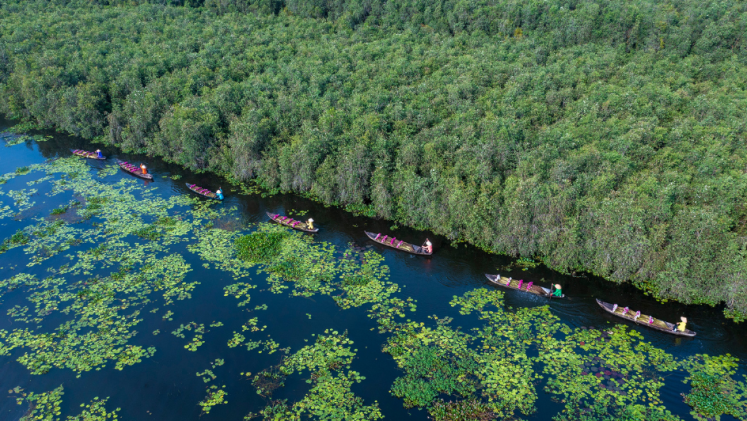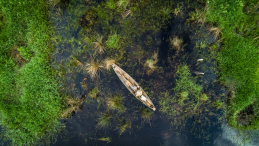Mangroves are crucial ecosystems that provide immense benefits to the planet and humanity, yet they remain at risk from both human and natural threats. The recent publication on The State of the World’s Mangroves 2024 highlights how these critical habitats are both irreplaceable and increasingly vulnerable. Here are five things you need to know about the current state of our mangrove ecosystems world-wide.
Mangroves are carbon powerhouses.
Mangroves are among the most effective ecosystems on Earth for carbon storage, often referred to as "blue carbon." A single hectare of mangrove can store an average of 394 tons of carbon in its biomass and top metre of soil. What does that mean? The average African elephant weighs about 6 tons. So, when a hectare of mangroves stores 394 tons of carbon, that is equivalent to the weight of around 65 African elephants in carbon stored away in the trees and soil. In some places, such as the Philippines, this figure can soar to an impressive 650 tons per hectare. This immense carbon storage capacity makes mangroves essential in the fight against climate change by naturally capturing and storing CO2, which helps reduce the levels of greenhouse gases in the atmosphere.
Global mangrove loss has slowed, but it is not over.
Despite progress made by conservation efforts, sizeable global mangrove losses continue, although at a slower rate. In just 20 years, the world lost about 2,839 square kilometres of mangrove forests, which is roughly equivalent to the size of Luxembourg. This represents a 44 per cent decline in the annual rate of loss, yet mangroves still face significant threats from human activities such as aquaculture, oil palm plantations and rice farming. In addition, other forces such as sea level rise, continue to put pressure on mangrove ecosystems.
Mangroves protect coastal communities from disasters.
Mangroves act as natural buffers against extreme weather events, which are becoming more frequent due to climate change. Research indicates that mangroves can reduce flood depths by 15-20 per cent during storms, and in some areas, this protective effect can exceed 70 per cent. Mangroves absorb storm surges, stabilize shorelines and provide essential protection for coastal regions and communities, particularly those vulnerable to cyclones, hurricanes and typhoons. This protection helps save lives, reduce property damage and minimize economic losses.
Mangroves support global food security.
Mangroves play a key role in global food security, serving as natural nurseries for nearly 800 billion fish species, prawns and crabs every year. These ecosystems are critical for maintaining fisheries, which support both local livelihoods and global seafood markets. In addition to aquatic resources, mangroves provide other foods such as honey, fruits and medicinal leaves. They also sustain a stable source of income for coastal communities by ensuring a year-round supply of these resources.
Restoration efforts are growing, but so are the risks.
Mangrove restoration is gaining momentum, with community-led efforts making substantial progress. However, around 50 per cent of the world’s mangrove areas are still under threat, as eight mangrove regions are classified as endangered or critically endangered. Conservation is the first and best strategy in terms of mangrove restoration, so they can be protected in the long run. Sea level rise and more intense storms pose growing dangers though, which puts increased stress on restoration initiatives. Global collaboration is necessary to expand the protection and restoration of mangroves and to implement sustainable management practices.





